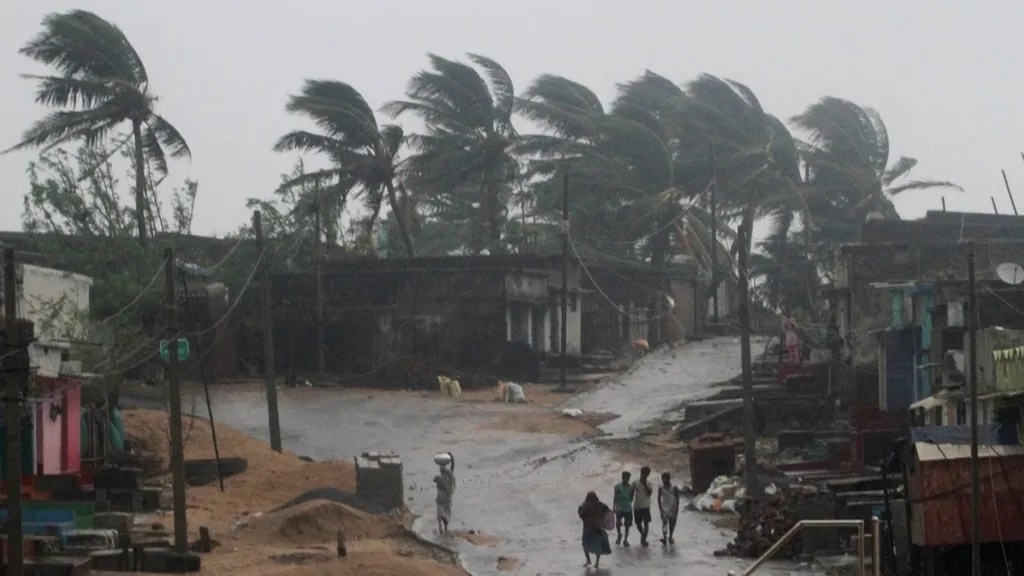Cyclones Rising Along India’s Coasts

TL;DR
India’s long coastline makes it highly vulnerable to tropical cyclones, particularly those forming in the Bay of Bengal and the Arabian Sea. These intense storms routinely bring heavy rainfall, strong winds, and storm surges that cause widespread destruction. Coastal states such as Odisha, West Bengal, Andhra Pradesh, and Gujarat bear the brunt of the impact, facing repeated loss of life, displacement, and severe economic setbacks. Between 1990 and 2022 alone, cyclones claimed over 12,200 lives across the country.
Context
Cyclones in India are categorised by the India Meteorological Department (IMD) based on wind speeds and pressure systems. These are:
- Cyclone: A cyclonic disturbance in which the maximum average surface wind speed is in the range of 34 to 47 knots (62 to 88 kmph).
- Cyclonic Disturbances: A non-frontal synoptic-scale low-pressure system originating over tropical waters with organised convection and definite cyclonic wind circulation. It is called a depression if the associated sustained maximum wind speed at surface level is 17-27 knots. It is called a deep depression if the sustained maximum wind speed is 28-33 knots.
- Severe Cyclone: A cyclonic disturbance in which the maximum average surface wind speed is in the range of 48 to 63 knots (89 to 117 kmph).
Who compiles this data?
The primary agency that publishes data on cyclones in the country is the India Meteorological Department, which operates under the Ministry of Earth Sciences.
Where can I download clean & structured data related to cyclones?
Clean, structured, and ready-to-use datasets related to cyclones in India can be downloaded from Dataful. This includes datasets covering frequency, season, and deaths.
Key Insights
- Most cyclonic events occur over the sea, with land-based occurrences being far less frequent and typically of lesser intensity.
- The Bay of Bengal consistently experiences significantly higher cyclonic activity than the Arabian Sea, with cyclonic disturbances being the most frequent, followed by cyclones and severe cyclones.
- There is a noticeable increase in the frequency and intensity of all cyclonic activities in the Arabian Sea during recent years, which can be attributed to warming sea surface temperatures, changing wind patterns, and precipitation.
- The Monsoon and Post-Monsoon seasons are most active for cyclonic events, with Winter being the calmest.
- While ‘Severe Cyclone and above’ events are rarer, there is a notable increase in their average frequency during the Post-Monsoon season in the last decade.
Why does it matter?
Cyclone data matters because it enables early warnings, timely evacuations, and disaster response planning, helping to save lives and reduce damage. It also informs infrastructure design, urban planning, and climate adaptation strategies, particularly in coastal regions that are increasingly vulnerable to more frequent and intense cyclonic events due to climate change.
Key numbers
- Annual average number of events (1891 to 2024)
- Cyclones – 2
- Cyclonic disturbances – 4
- Severe cyclones – 8
- Severe cyclonic activities over the Arabian Sea
- 14 (1950-1974) → 17 (1975-1999) → 26 (2000-2024)